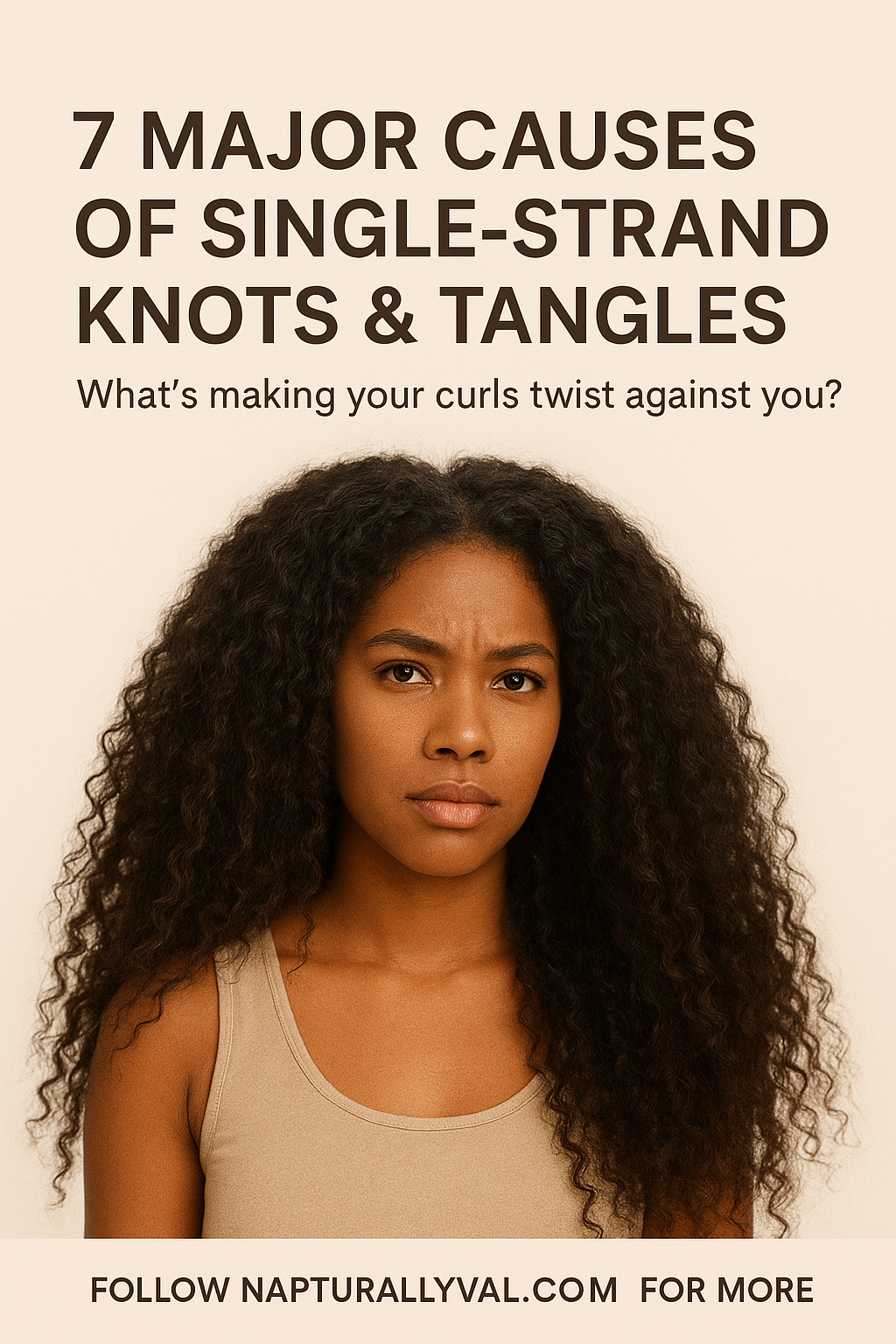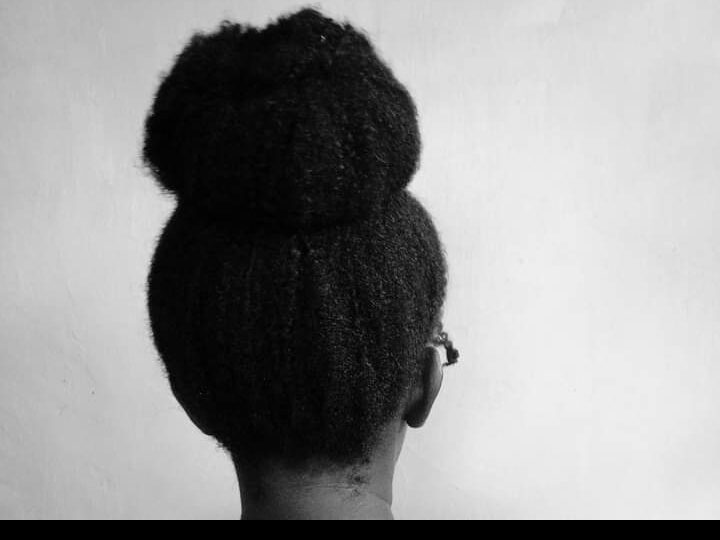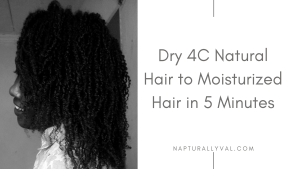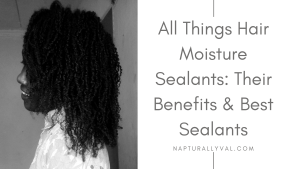Hey there, curl friends! If you’ve ever battled with single strand knots or tangles, you know just how frustrating they can be. These pesky little knots seem to appear out of nowhere, and they can make managing your curls feel like a full-time job. But don’t worry, you’re not alone, and the good news is, many of these issues can be avoided with a few tweaks to your hair care routine. Today, we’re diving into the major causes of single strand knots and tangles and sharing tips on how to avoid them. Let’s get started!
Feel like your hair has been the same length forever, I’ve an Ebook that will help you grow your hair healthier, longer and thicker. Grab your copy here… Also, check out all the Ebooks,guides and journals that will go a long way in your hair care journey here.

Table of Contents
What causes Knots and Tangles on Natural Hair.
1. Skipping Regular Detangling
One of the biggest culprits behind single strand knots and tangles is neglecting to detangle your hair regularly.
Why It’s a Problem: When you don’t detangle your hair often enough, it can lead to the formation of knots and tangles. As hair strands rub against each other and get caught, they can knot up, leading to single strand knots. Additionally, the longer you wait between detangling sessions, the more likely these knots will become problematic and harder to manage.
How to Avoid It: Make detangling a regular part of your hair care routine. Aim to detangle your hair at least once a week. Use a wide-tooth comb or a detangling brush specifically designed for natural hair. Apply a generous amount of conditioner or a detangler to help ease through knots. Always start from the ends and work your way up to minimize breakage and reduce the risk of creating more knots.

2. Overuse of Heavy Products
Using too much product, or using heavy products that aren’t suitable for your hair type, can lead to product buildup and increased tangling.
Why It’s a Problem: Heavy products can weigh down your hair, causing it to clump together and form tangles. Additionally, product buildup on your strands can create friction, making it easier for knots to form and harder for your hair to stay smooth.
How to Avoid It: Use hair products in moderation and choose products that are appropriate for your hair type. Light, water-based products are generally better for avoiding buildup. Make sure to thoroughly rinse out all products from your hair to prevent residue from accumulating. Regularly clarifying your hair with a gentle clarifying shampoo can help remove buildup and keep your hair clean and manageable.
3. Not Protecting Hair While Sleeping
The way you protect your hair at night can significantly impact tangling and knot formation.
Why It’s a Problem: Cotton pillowcases can create friction against your hair, leading to tangling and breakage. Additionally, if your hair is not protected, it can rub against your pillowcase, causing strands to twist and knot together.
How to Avoid It: Switch to a silk or satin pillowcase to reduce friction and prevent tangling while you sleep. Alternatively, you can wrap your hair in a silk or satin scarf or wear a satin bonnet. These materials are much gentler on your hair and help maintain its moisture, reducing the likelihood of knots and tangles.

4. Neglecting Moisture and Hydration
Proper moisture and hydration are crucial for maintaining healthy hair and preventing tangles.
Why It’s a Problem: Dry hair is more prone to breakage and tangling. When your hair lacks moisture, it can become brittle and rough, making it easier for strands to knot up and tangle.
How to Avoid It: Keep your hair moisturized by using a combination of water-based leave-in conditioners, oils, and creams. Incorporate the LOC (Liquid, Oil, Cream) or LCO (Liquid, Cream, Oil) method into your routine to lock in moisture. Additionally, regularly deep condition your hair to restore hydration and maintain elasticity. This will help keep your curls soft, manageable, and less prone to tangling.
5. Overusing Heat Styling Tools
Frequent use of heat styling tools can contribute to dryness and increased tangling.
Why It’s a Problem: Heat styling tools can strip moisture from your hair, making it more susceptible to tangling and breakage. Additionally, heat can weaken the hair cuticle, leading to rough, snag-prone strands.
How to Avoid It: Limit your use of heat styling tools to once or twice a week. When you do use them, always apply a heat protectant to shield your hair from damage. Opt for the lowest heat setting necessary and consider air-drying your hair whenever possible. Embrace your natural curls and reduce the frequency of heat styling to keep your hair healthy and tangle-free.
6. Not Using Proper Detangling Techniques
How you detangle your hair matters just as much as how often you do it.
Why It’s a Problem: Using the wrong detangling techniques can lead to breakage and exacerbate tangling. For example, yanking or pulling on dry hair can cause strands to snap and knot up.
How to Avoid It: Always detangle your hair when it is damp and coated with a slippery conditioner or detangling spray. Use a wide-tooth comb or a detangling brush and work from the ends to the roots. Be gentle and patient to avoid causing additional knots or breakage. If you encounter a particularly stubborn knot, use your fingers to gently work it out before using a comb or brush.

7. Ignoring Regular Trims
Regular trims are essential for maintaining the health of your hair and preventing tangles.
Why It’s a Problem: Split ends and damaged hair can cause strands to catch on each other, leading to tangles and knots. Over time, these split ends can worsen and create more severe tangling issues.
How to Avoid It: Schedule regular trims every 4-6 months to keep your ends healthy and prevent split ends. You can also dust your ends every now and then when you notice damaged and split ends. Regular trimming helps remove damaged hair and reduces the risk of tangles. If you’re growing out your hair, trims are still important to ensure that your hair remains healthy and free from split ends.

There you have it—seven major causes of single strand knots and tangles and how to avoid them. By making a few adjustments to your hair care routine and being mindful of these common pitfalls, you can keep your curls smooth, hydrated, and free from pesky knots.
If you have any additional tips or personal experiences with dealing with single strand knots and tangles, I’d love to hear from you! Drop a comment below and share your thoughts. Here’s to embracing and loving every beautiful curl without the hassle of knots and tangles!



